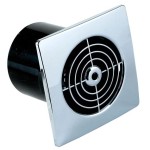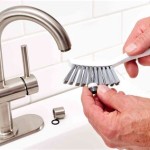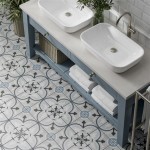Using Bleach To Clean Bathroom Tiles: A Comprehensive Guide
Bathroom tiles, particularly those in showers and around sinks, are prone to accumulating grime, soap scum, mold, and mildew. Maintaining their cleanliness is crucial not only for aesthetic appeal but also for hygiene. Bleach, a powerful oxidizing agent, is frequently considered a solution for disinfecting and cleaning these surfaces. This article explores the effective and safe use of bleach for cleaning bathroom tiles, outlining the benefits, risks, proper methods, and necessary precautions.
Understanding Bleach and Its Cleaning Properties
Bleach, typically referring to sodium hypochlorite (NaClO) solutions, is a potent disinfectant and cleaning agent. Its effectiveness stems from its ability to break down the chemical bonds in stains, mold, and bacteria. When bleach comes into contact with organic matter, it oxidizes the material, causing it to break down and become easier to remove. This makes bleach particularly effective in combating mildew, a common problem in damp bathroom environments.
The oxidizing properties of bleach also contribute to its whitening effect. It can lighten stains and restore the original color of grout and tiles. However, it's important to note that bleach is not a universal cleaner. It is most effective on specific types of stains and materials, and its use should be carefully considered based on the type of tile and the nature of the dirt or stain needing removal.
Before proceeding with using bleach, it is essential to understand the composition of the tile and grout. Certain materials may react negatively to bleach, leading to discoloration or damage. A small, inconspicuous test area should always be treated first to assess compatibility.
Precautions and Safety Measures When Using Bleach
Bleach is a corrosive chemical that can pose health risks if not handled properly. Prioritizing safety is paramount when using bleach for cleaning purposes. Adequate ventilation is essential to prevent the inhalation of fumes, which can irritate the respiratory system. Opening windows and using exhaust fans can significantly improve air circulation.
Personal protective equipment (PPE) is crucial to prevent skin and eye contact with bleach. Gloves made of rubber or nitrile should be worn to protect the hands from irritation and chemical burns. Eye protection, such as goggles or safety glasses, is vital to shield the eyes from splashes. In the event of eye contact, immediate and thorough rinsing with water is necessary.
Bleach should never be mixed with other cleaning agents, especially ammonia. Combining bleach with ammonia creates chloramine gas, a highly toxic and potentially deadly compound. Similarly, mixing bleach with acidic cleaners, such as vinegar or toilet bowl cleaner, can produce chlorine gas, which is also harmful. Always use bleach in isolation, following the instructions on the product label.
Proper storage of bleach is also essential. It should be kept in a cool, dark place, away from children and pets. The original container should be tightly sealed to prevent leaks and evaporation. Never store bleach in unmarked containers or containers previously used for other chemicals.
Step-by-Step Guide to Cleaning Bathroom Tiles with Bleach
The effectiveness of bleach in cleaning bathroom tiles depends on proper application and adherence to safety guidelines. The following steps outline a recommended procedure:
Step 1: Preparation. Begin by gathering the necessary materials, including bleach, gloves, eye protection, a scrub brush or sponge, a bucket, and water. Ensure that the bathroom is well-ventilated.
Step 2: Dilution. Bleach should always be diluted with water before use. The recommended dilution ratio is typically one part bleach to ten parts water. This concentration is generally effective for cleaning and disinfecting without being overly harsh. However, for stubborn stains, a slightly stronger solution may be used, but caution should be exercised.
Step 3: Application. Apply the diluted bleach solution to the tiles using a sponge or spray bottle. Focus on areas with visible mold, mildew, or stains. Allow the solution to sit on the surface for approximately 10-15 minutes. This dwell time allows the bleach to penetrate and break down the dirt and grime.
Step 4: Scrubbing. After the dwell time, use a scrub brush or sponge to vigorously scrub the tiles and grout. Pay particular attention to grout lines, as they tend to accumulate dirt and mold. A grout brush can be especially helpful for reaching into the narrow spaces between tiles.
Step 5: Rinsing. Thoroughly rinse the tiles with clean water to remove all traces of bleach. Repeat the rinsing process to ensure that no residue remains. Lingering bleach can damage certain surfaces and may continue to emit fumes.
Step 6: Drying. Allow the tiles to air dry completely. Opening windows and using a fan can expedite the drying process. Once dry, inspect the tiles for any remaining stains or discoloration. If necessary, repeat the cleaning process or consider alternative cleaning methods.
Addressing Specific Tile and Grout Cleaning Challenges
While bleach is a versatile cleaning agent, specific challenges may arise when cleaning different types of tiles and grout. Understanding these challenges and adopting appropriate techniques can optimize the cleaning process.
Porcelain and Ceramic Tiles: Porcelain and ceramic tiles are generally resistant to bleach and can be cleaned effectively using the methods described above. However, it is still advisable to test a small area first, especially if the tiles have a decorative finish or are coated with a sealant.
Natural Stone Tiles: Natural stone tiles, such as marble, granite, and limestone, are more porous and susceptible to damage from harsh chemicals like bleach. Bleach can etch or discolor these surfaces, so it is generally not recommended for cleaning natural stone tiles. Instead, use pH-neutral cleaners specifically designed for natural stone.
Colored Grout: Bleach can fade or discolor colored grout. If cleaning colored grout with bleach, use a diluted solution and minimize the dwell time. Immediately rinse the grout with water to prevent discoloration. Alternatively, consider using grout-specific cleaners that are formulated to clean without affecting the grout color.
Stubborn Mold and Mildew: For persistent mold and mildew, a stronger bleach solution may be necessary, but caution should be exercised. Apply the solution directly to the affected area and allow it to sit for a longer period, up to 30 minutes. Regularly monitor the area to ensure that the bleach is not damaging the tile or grout. In cases of severe mold infestation, professional mold remediation services may be required.
Alternative Cleaning Methods for Bathroom Tiles
While bleach can be effective for cleaning bathroom tiles, it is not the only option. Various alternative cleaning methods can be used to maintain the cleanliness of tiles, some of which are less harsh and more environmentally friendly.
Vinegar: White vinegar is a natural disinfectant and cleaning agent that can be used to remove soap scum and hard water stains from bathroom tiles. Mix equal parts vinegar and water in a spray bottle and apply to the tiles. Allow it to sit for a few minutes, then scrub and rinse with water.
Baking Soda: Baking soda is a mild abrasive that can be used to scrub away dirt and grime. Create a paste of baking soda and water and apply it to the tiles. Scrub gently with a sponge or brush and rinse with water.
Commercial Tile Cleaners: Numerous commercial tile cleaners are available on the market, formulated to clean different types of tiles and grout. Choose a cleaner that is appropriate for the specific type of tile in the bathroom and follow the manufacturer's instructions.
Steam Cleaners: Steam cleaners use hot steam to loosen dirt and grime from tiles and grout. They are a chemical-free alternative to traditional cleaning methods and can effectively remove mold and mildew.
Regular cleaning and maintenance are essential for preventing the buildup of dirt, soap scum, and mold. Wiping down the tiles after each shower and regularly cleaning the grout can significantly reduce the need for harsh cleaning agents like bleach.

10 Things To You Need Clean With Bleach In The Bathroom Pinning Mama

How To Clean With Bleach In A Bathroom Family Handyman

10 Things To You Need Clean With Bleach In The Bathroom Pinning Mama

Can I Use Bleach To Clean My Grout

Can You Use Clorox To Clean Tile Grout The Medic

How To Clean Grout Make It Look Brand New Again

7 Most Powerful Ways To Clean Tiles Grout Naturally

Woman Transforms Bathroom With Sdy Cleaning Daily Mail

I M A Professional Cleaner This Is Why You Should Never Bleach Your Bathroom And What To Use Instead The Us Sun

How To Clean A Bathroom Using Clorox Bleach Remodelaholic
Related Posts







